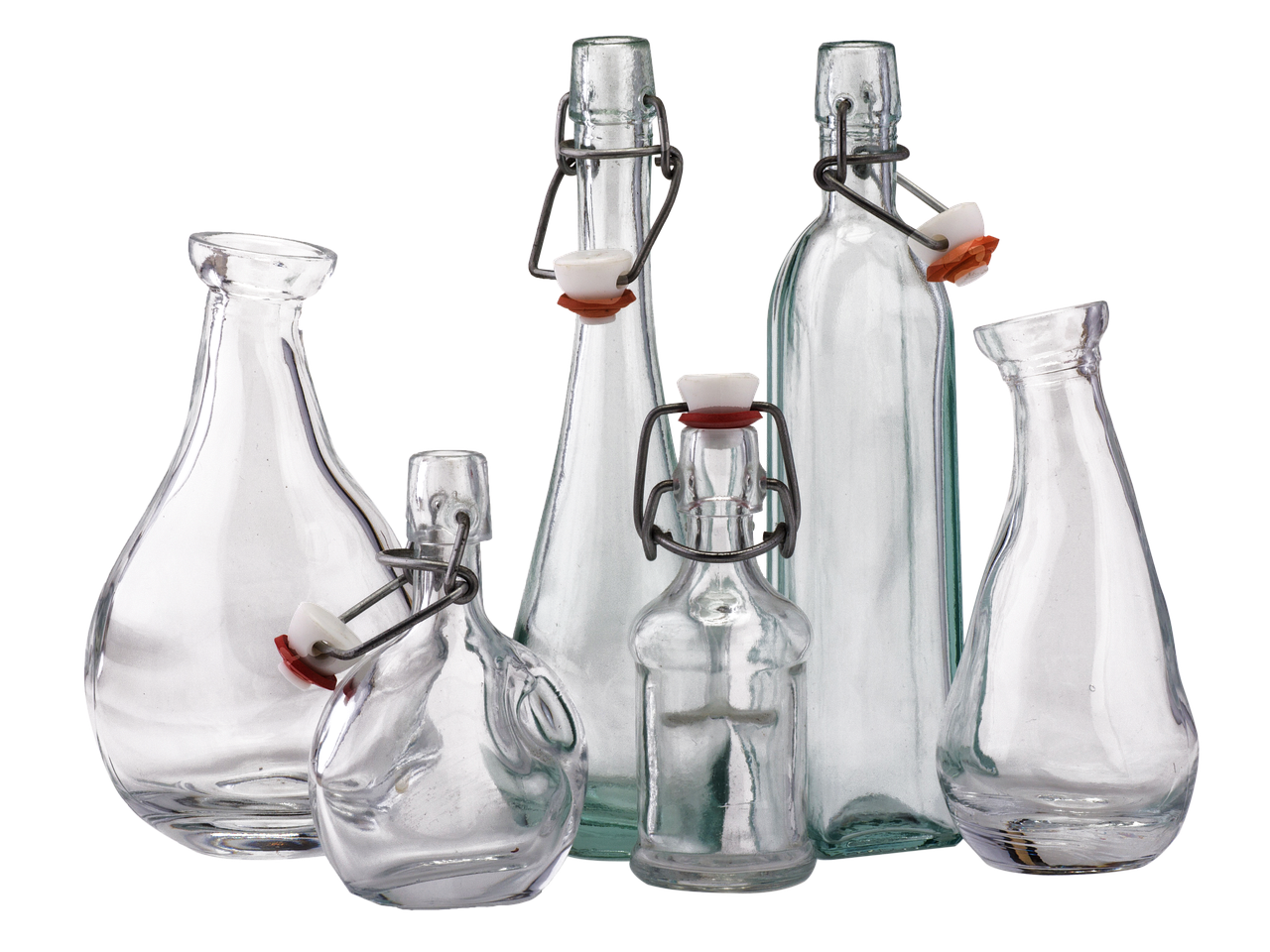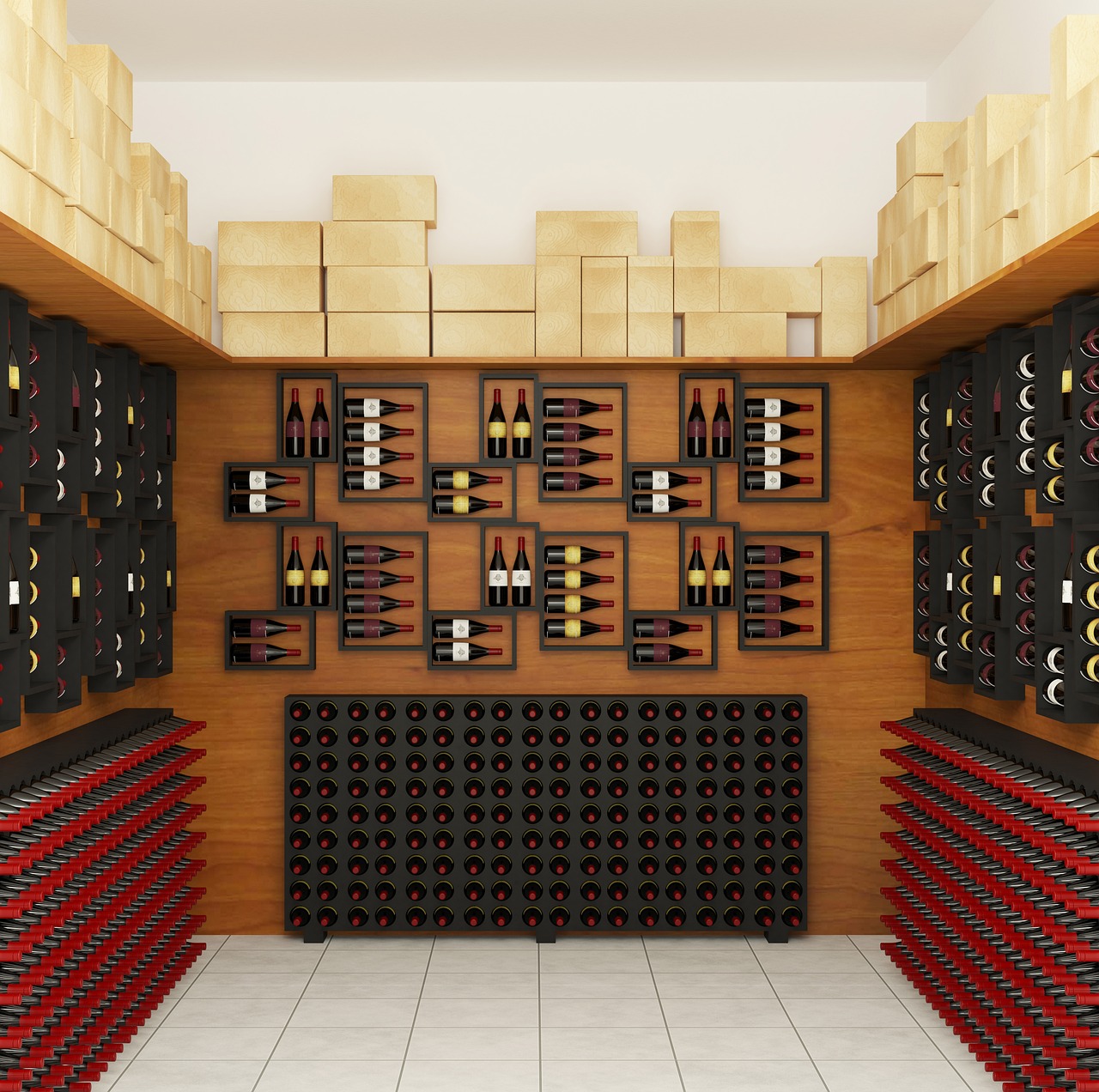The differences between wine bottles
The wine bottle is one of the most common storage and transport containers for the sale and storage of wine to the end consumer. Many different sizes and shapes are manufactured and produced. The most common bottles have a capacity of 0.75 litres and have been part of the well-known EU standard since 1977. However, the 0.75 litre standard size is not used universally by all countries worldwide; for example, the USA and Switzerland still like to use the earlier 0.7 to 0.8 litre sizes. Nowadays, wine is even available in Tetra Packs, but only draught wines are bottled here and not high-quality wines.
The history of wine bottles
In the past, wine was almost exclusively vinified in barrels and stored in vats. The wine was often mixed with resins, sugared or diluted to increase its shelf life, so that it was only with the invention of the glass bottle that the type of wine we know and love today could be created. Wine was served in metal or ceramic jugs and traded in so-called "Schläuchen" (containers made from animal skins). In the 17th century, glass bottles were used for the first time for production and in the 18th century this production method became more and more established and quickly became more popular. In the 19th century, the glass bottle became the most important container for wine. An important reason for this was that glass is chemically neutral. This allowed for good storage and ageing. It was also popular at this time for producers to emboss seals (company or retailer seals) on the glass to enable clear identification and improve customer loyalty. The colour of the glass was initially black, but later olive/green and then brown glass was added. The shape of the glass was initially "onion-shaped" - bulbous, later improvements were introduced in the direction of cylindrical bottles. This innovation brought considerable improvements.
The Bordeaux bottle:
The Bordeaux bottle is easily recognisable by its shoulders. It is one of the most popular shapes for dry red wines. The base of the wine bottle is slightly curved to prevent the sediment (deposit) from flowing into the drinking glass. This bottle shape must be placed upright well before serving in order to collect the sediment of the high-quality wines at the bottom.
The Burgundy bottle:
The original Burgundy bottle has no shoulders. It is generally used for red wine and white wine. The classic colour of the bottle is dark to light green, but there are also clear glass versions. In Italy, it is used in very dark glass for many different wines (Barolo, Barbaresco, etc.). In Germany, Burgundy bottles are used for grey or Pinot Noir wines, for example.
Tall or Schlegel bottle:
The tall or Schlegel bottle is a slender, flute-like bottle that resembles an elongated Burgundy bottle. It originated in Germany. It is therefore preferably used for the varieties that are common in Germany. They are usually available in brown (Rhine) and green bottles (Moselle). In addition to Germany, the high bottle is a typical shape for Alsace (usually slightly higher than in Germany), Austria and Switzerland. Worldwide, it is often used for Rieslings and dessert wines.
Champagne bottles:
The bottle is quite thick-walled in order to withstand the pressure inside the bottle. The curved base was originally created during glass blowing because the bottle had to be turned over a wooden stick. However, the curved base absorbs the pressure better against the walls and thus ensures that the base of the bottle does not break. The classic champagne bottle is green, only a few exceptions are clear (Roederer Cristal). The green (or brown for other wines) colour generally protects the wine from the damaging effects of UV rays and is particularly important for wine that has been stored for a long time. In general, the darker the bottle and the storage location, the better the protection against UV radiation!
Other bottle shapes:
In addition to the wine bottles just mentioned, there are many other typical bottle shapes. For example, the flat, bulbous Bocksbeutel is used in Franconia and Portugal, the Hungarian Tokay has its own typical bottle shape, as do port wine, the wines of Provence (which are traditionally filled in club bottles) and Vin Jaune.
Wicker bottles etc.:
Paired with the graceful Rheingau glass, the Rheingau flute sets new standards. Since the early 1990s, for example, there has been a special bottle shape for Californian wines and since the 1990s there has been a general trend towards mostly slim designer bottles. The list of special bottles is long: in Bordeaux, Château Haut-Brion has had a unique bottle shape for many decades.
However, there are other special bottles that are not intended for sale but exclusively for storage. A classic variant is the demi-john, which holds 45 litres and is used to store non-vintage port wine as well as sherry or Moscatel. After ageing in this large bottle, the wines are then transferred to the 0.75 litre bottle.
The standard bottle size for wine is 0.75 litres or 1/4 bottle. Other bottle sizes have their own designation, and biblical names from history have usually become established.


Balthazar
This is not one of the "Three Holy Kings", but the son of Nebudaknezzar II. Nebudaknezzar II was the last king in the Neo-Babylonian Empire from 604 B.C. to 562 B.C. In the Old Testament it is written that Balthazar desecrated the vessels of Jehovah that his father had previously robbed from the holy temple in Jerusalem. After the vessels were removed by Jehovah, an inscription of flame appeared on the palace wall. The prophet Daniel read: "My tekel u-pharsin" (translated: Weighed and felt too lightly).
Jeroboam
Solomon banished Jeroboam because of a rebellion. In the same year that Solomon died and passed the office on to his son, Jeroboam returned and founded the kingdom of Israel with ten tribes.
Rehoboam
Rehoboam is the son of Solomon and his successor as king of Judah (southern kingdom of the Jews).
Methuselah
He was the biblical forefather of the Old Testament and lived to be 969 years old. Scholars at the time added his household effects, possessions, livestock etc. to his real age. This gave rise to the imaginary age, a very old age.
Nebuchadnezzar II
Father of Balthazar. Nebuchadnezzar II conquered Judah in 586 BC. During the conquest, he destroyed the capital Jerusalem and the temple built by Solomon. The upper class of the Jews were taken into captivity. When Nebudaknezzar II died, his son Balthazar was the last king of the Neo-Babylonian Empire. Nebudaknezzar II went down in history as the model for Giuseppe Verdi's opera Nabuccho.
Salmanazar V Assyrian king
He conquered the northern kingdom of the Jews and made it a province of Assyria.
The bottle sizes differ slightly depending on the type of wine or wine region!


Bordeaux
| Name | Contents | # Bordeaux bottles |
|---|---|---|
| Half | 375 ml | 1/2 bottle |
| Bottle | 750 ml | 1 bottle |
| Magnum | 1500 ml (1.5 L) | 2 bottles |
| Marie Jeanne | 2250 ml (2.25 L) | 3 bottles |
| Double Magnum | 3000 ml (3 litres) | 4 bottles |
| Jeroboam | 5000 ml (5 litres) | 6 bottles |
| Rehoboam (not used) | ----- | ----- |
| Imperial | 6000 ml (6 litres) | 8 bottles |
| Methuselah (not used) | ----- | ----- |
| Salmanazar (not used) | ----- | ----- |
| Balthazar | 12000 ml (12 L) | 16 bottles |
| Nebuchadnezzar | 15000 ml (15 litres) | 20 bottles |
| Melchior | 18000 ml (18 litres) | 24 bottles |
Burgundy / Rhone
| Name | Contents | # Burgundy bottles |
|---|---|---|
| Half | 375 ml | 1/2 Bottle |
| Bottle | 750 ml | 1 bottle |
| Magnum | 1500 ml (1.5 L) | 2 bottles |
| Marie Jeanne (not used) | ----- | ----- |
| Double Magnum (not used) | ----- | ----- |
| Jeroboam | 3000 ml (3 litres) | 4 bottles |
| Rehoboam | 4500 ml (4.5 L) | 6 bottles |
| Imperial (not used) | ----- | ----- |
| Methuselah | 6000 ml (6 litres) | 8 bottles |
| Salmanazar | 9000 ml (9 litres) | 12 bottles |
| Balthazar | 12000 ml (12 litres) | 16 bottles |
| Nebuchadnezzar | 15000 ml (15 litres) | 20 bottles |
| Melchior | 18000 ml (18 litres) | 24 bottles |
Champagne
| Champagne name | Contents | # Champagne bottles |
|---|---|---|
| Half | 375 ml | 1/2 Bottle |
| Bottle | 750 ml | 1 bottle |
| Magnum | 1500 ml (1.5 L) | 2 bottles |
| Marie Jeanne (not used) | ----- | ----- |
| Double Magnum (not used) | ----- | ----- |
| Jeroboam | 3000 ml (3 litres) | 4 bottles |
| Rehoboam | 4500 ml (4.5 L) | 6 bottles |
| Imperial (not used) | ----- | ----- |
| Methuselah | 6000 ml (6 litres) | 8 bottles |
| Salmanazar | 9000 ml (9 L) | 12 bottles |
| Balthazar | 12000 ml (12 litres) | 16 bottles |
| Nebuchadnezzar | 15000 ml (15 litres) | 20 bottles |
| Melchior | 18000 ml (18 litres) | 24 bottles |

